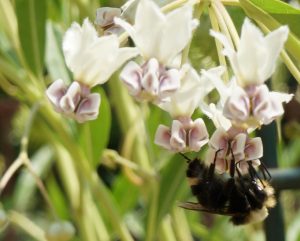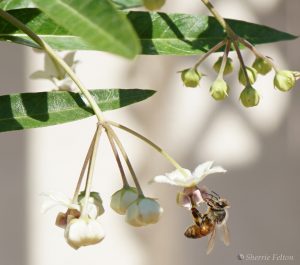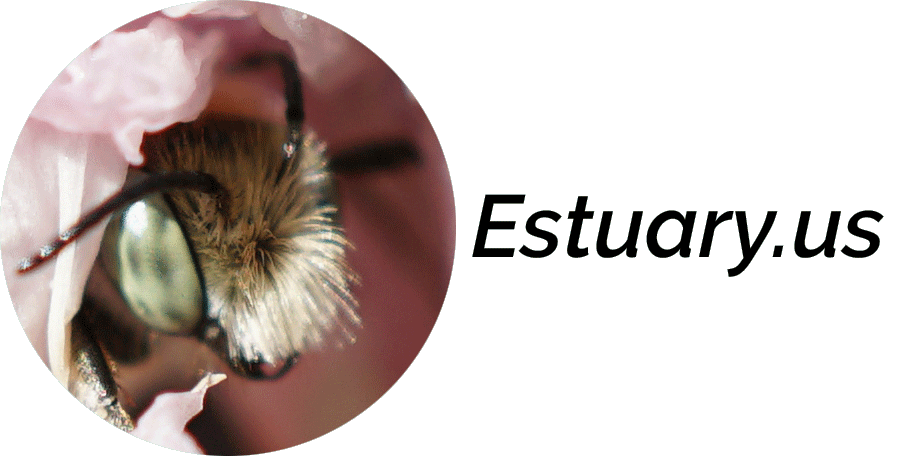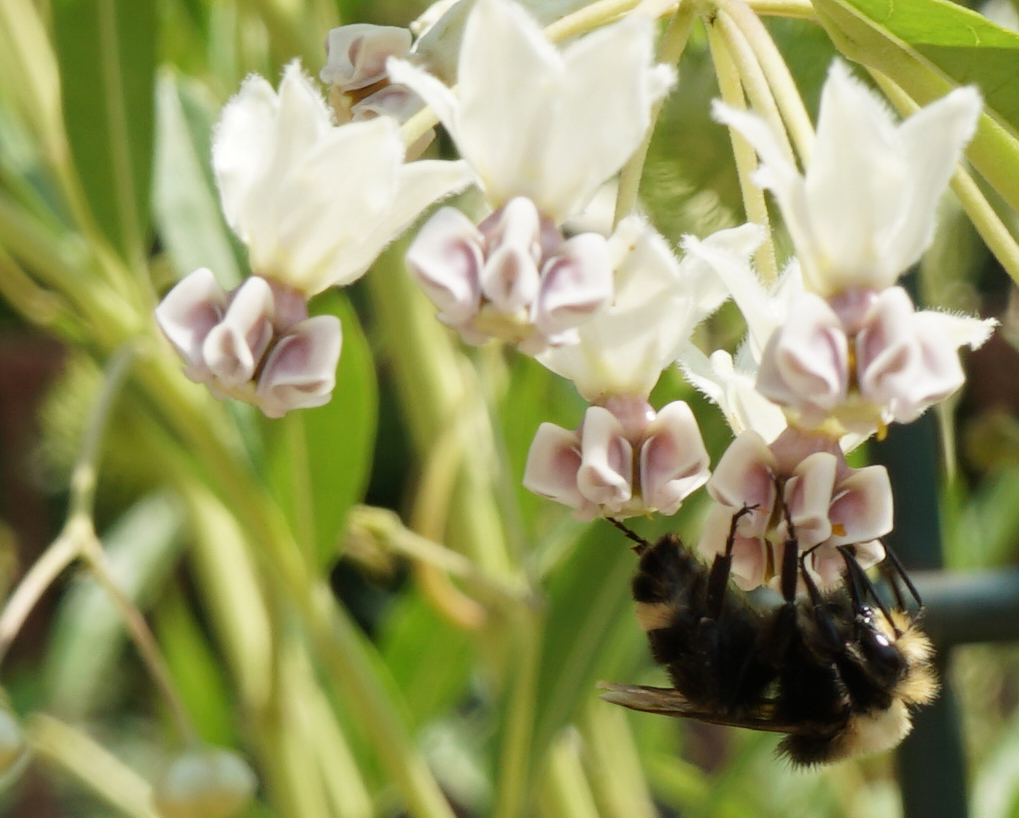“Trees remind us how busy and unstable we are, and how ridiculous that is.”
—Rebecca Solnit, A Childhood of Reading and Wandering
“Imagine your whole life in a few months, everything accelerated. We must seem as slow as a tree to them.”
—Bert Wilson, Yellow-Faced Bumble Bee (Bombus vosnesenskii)

As I child I feared all stinging creatures. Bumble bees were particularly frightening because of their size, hairy appearance and the buzzing sound that I believed was a threatening vocalization rather than the vibration of flight muscles. In my childish mind, they were fully aware of me, as cognizant of and interested in my terror as only an insect must be. A bumble bee’s approach was a sign of immanent attack, because I thought myself the center of the universe.
After moving to California from New Jersey in 2011. I found myself disoriented by the distant horizon, the mountains, the presence of the harsh sun nearly every day of the year, the sunlight so bright to my eyes that I would and still do hide from it, especially on the hottest days of summer. After the initial shock and acclimation to an unfamiliar territory, after I started to learn about the ecology, the plants and animals that lived in the region, after I understood that nearly all of the plants put in around our house by a landscape designer years ago were useless to local pollinators, I took an interest in replacing the non-natives with native California plants. The resulting project, begun in the spring of 2016, is a slow and incremental one with no known end date.
As of this writing I have pulled out many of what I will call a “generic landscape shrub,” generic because one sees it everywhere in Thousand Oaks and beyond. With glossy leaves the generic produces small pink flowers that bloom in the spring and draw honey bees. The shrub may be pruned into a tidy round or flat-topped shape after blooming. And then, it just exists, an unremarkable, easily overlooked bit of greenery that, in my observation, attracts and supports native pollinators not at all. I think it is a good shrub for strip malls and businesses where the management company or property owner prefers anonymous landscaping. Also gone are nearly all the Agapanthus (origin: southern Africa), another ubiquitous landscaping choice that attracts hummingbirds, and the African iris (origin: southern and eastern Africa). I kept two bougainvillea (origin: South America) vines for the hummingbirds. If a hummingbird wants an Agapanthus to sip from during the summertime, it can fly next door; there are lots of them in our neighborhood.
All the rose bushes came out recently, 20 at least. Pulling them was not easy to do in many respects, not the least of which was that my mother was very fond of roses. Native plant replacements to date include several species each of aster, buckwheat, ceanothus, dudleya, lupine, milkweed, monkey flower, penstamon, sage, yarrow; and the tough, tough Verbena de la Mina.
Last winter, coastal, southern California received more than adequate rain. At the higher elevations, in the mountains, abundant snow fell. After several years of parched winters so devoid of normal precipitation that California was said to be suffering from a multiyear drought, and possibly headed toward a megadrought, the spell was broken, at least for one season.
As soon as the first aster flowers bloomed in the front yard, they were visited by the Western or European honey bee (Apis mellifera), a universally known species that was introduced on the North American continent in the early 1600s. In addition to nectar, female honey bees bring pollen, collected on their hind legs, back to the hive to feed the queen and developing bees. Male bees do not forage, immature male (and female workers) are fed by nurse bees. Once mature, male bees feed themselves from the hive’s honey supply while the females begin their foraging career.

The flowers of three Balloon Plant milkweeds in the back yard started to get many bee and bee-like visitors as well, sometimes ten to fifteen at a time buzzing around the plants, moving from flower to flower. I did not see the pollen baskets at first. The physiological details are difficult to parse when observing a flying insect that is rarely motionless, but my photos confirmed that the milkweed visitors were also female honey bees. I was encouraged by the appearance of so many honey bees, but continued to look for lesser known species such as the Mason bee or the Ultra-green Sweat bee, for the many bee species that evolved alongside the plants that are associated with the southern California coastal sage scrub and chaparral biome. And where were the bumble bees?
As spring progressed, ceanothus, lupine and many other wildflowers bloomed with abandon along the trails I hiked. From late spring, I noticed bumble bees and other pollinators gathering pollen and sipping nectar on the many wildflowers growing along the trail edges. One morning I came upon a diverse congregation “working” the flowers of a mature Narrow Leaf milkweed (Asclepias fascicularis). Here was proof of what I had read about but never before witnessed: For many species and on that morning in particular, for a Carpenter bee, a Yellow-Faced bumble bee, honey bees, Hover flies, two Tarantula Hawk wasps, several unidentifiable, smaller bees or flies and a hummingbird, the Narrow Leaf milkweed is an oasis. The smaller bees or flies would remain unidentified, because I had no interest in taking a close look with Hawk wasps present.
As the native plants started blooming around our house I saw some new visitors including bumble bees that were absent in previous seasons. Among the visitors was a Yellow-faced bumble bee gathering nectar and pollen from the tiny flowers on a San Miguel Island/Red buckwheat (Eriogonum grande rubescens). The California bumble bee (Bombus californicus) has been a visitor as well, working the aster flowers.
Yellow-faced bumble bees live in a colony, usually in an abandoned hole in the ground made by a previous occupant. They are not aggressive and do not appear to be at all interested in human beings. By my observation, one would have to go out of her way or just have a significant amount of bad luck or karma to get stung by any one of the Bombus tribe. That said, the sting is reported to be very painful and they can sting more than once. Gretchen LeBuhn’s Field Guide to the Common Bees of California is a good place to start for those interested in learning more about bee species that were here for millennia prior to 1542, the year when the first European conquistador set foot on the shoreline of what is now known as San Diego bay. LeBuhn’s book also includes plants suggestions to attract and support the continued existence of native bees.

